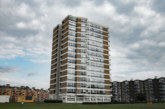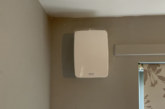 In the penultimate part of our domestic ventilation series, John Kelly, Marketing Manager at Airflow Developments, discusses the importance of assessing the performance of ventilation systems and why working with approved installers with the correct training is essential.
In the penultimate part of our domestic ventilation series, John Kelly, Marketing Manager at Airflow Developments, discusses the importance of assessing the performance of ventilation systems and why working with approved installers with the correct training is essential.
When specifying ventilation systems for residential properties it is essential to ensure that it will work as intended once operational. Although a product’s predicted performance may meet the standard set in Approved Document F of the Building Regulations, if not installed or maintained correctly its actual performance could drop below the required level. This poor can result in a build-up of pollutants and moisture within the property, which can have an adverse effect on the health of residents and the fabric of the building.
To prevent this, social housing providers should check the product’s installed performance data, paying particular attention to the fan’s performance graph, known as the ‘fan curve’. This details the fan’s flow rate against the static pressure, providing specifiers with a greater understanding of the installed performance.
However, although the fan curve data would suggest a suitable performance level, the system must be installed correctly. For example, if flexible ducting is crushed or not installed at the correct tension it can create increased system pressure that a fan cannot overcome and significantly affect how the fan will work. For this reason, it is important that the installer has completed an approved ventilation installer course, such as NICEIC training and been assessed and registered on the Competent Person Scheme. The course educates installers on how to correctly design, install, test and service the four types of ventilation systems outlined in the Building Regulations.
Finally, once installed, the system should be tested using a Powered Air Flow meter to check the extractor fan and ensure it meets installed performance standard. These instruments use an inbuilt fan to equalise the back pressure of the measuring device so that accurate air flow measurements are possible without further complex calculations. Again, to guarantee the accuracy of the results, it is always recommended that the test is carried out by an installer who is on the Competent Person register.
It is a common mistake to assume that the predicted performance figures will match how the system will work in practice. Specifiers should consult the published test data and fan curve as well as partnering with a fully trained installer to ensure the installation complies with Approved Document F of the Building Regulations.










